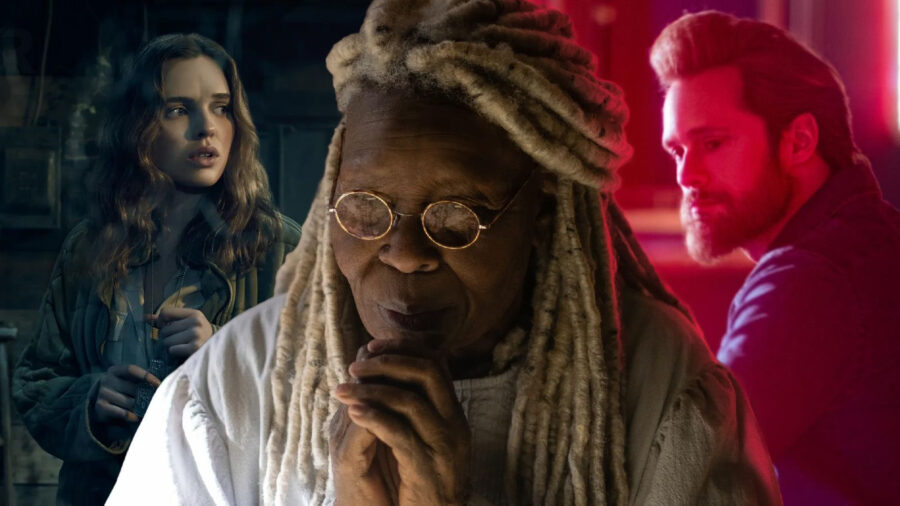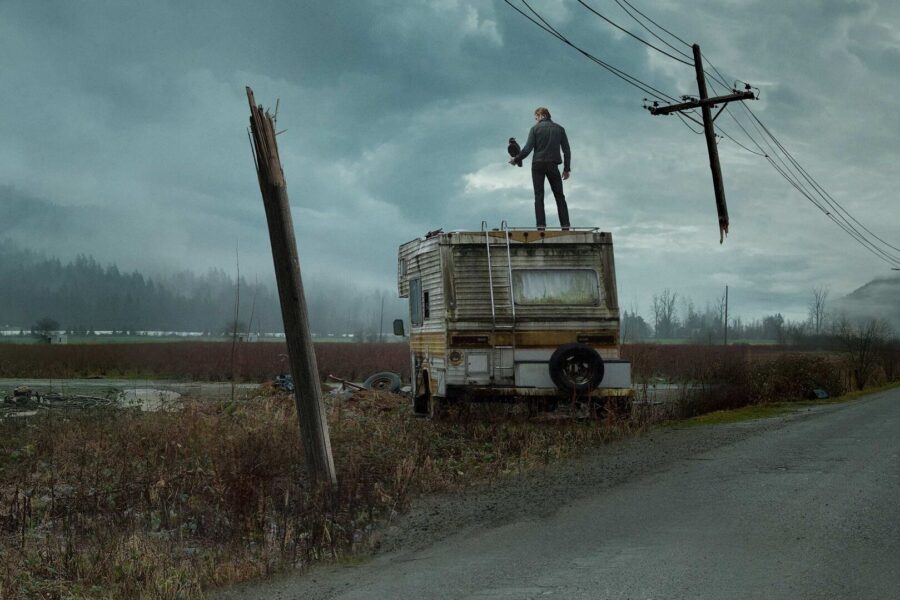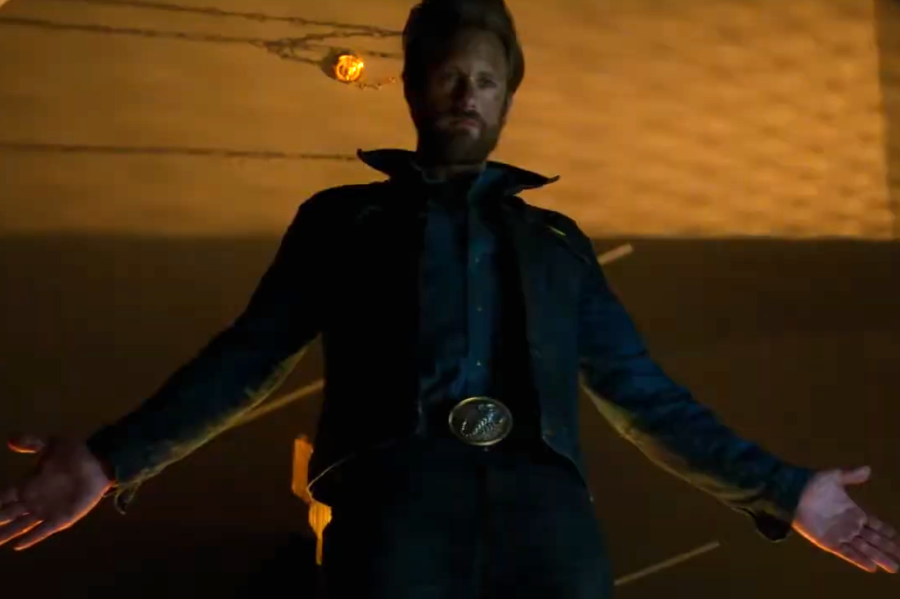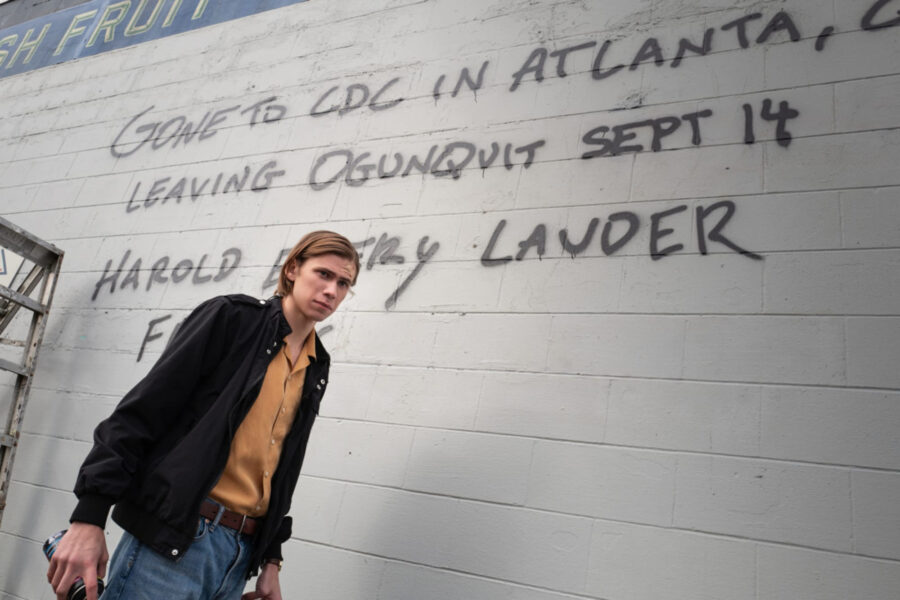The Stand Review: Stephen King’s Pandemic Epic Gets Off To A Solid But Strange Start
The Stand on CBS All-Access is off to a strange but promising start.
This article is more than 2 years old

The Stand is one of those stories that feels nearly insurmountable to adapt. Stephen King‘s original apocalyptic opus is a sprawling adventure with loads of characters and a story that actually gets far stranger and metaphysical than it might appear. However, the book was turned into a television miniseries back in 1994 and CBS All-Access is attempting to do it once again with a brand new limited series. Are they going to be successful?
As far as the initial outing is concerned, The Stand is working so far. However, it is very difficult to judge the show on its first episode because the initial kickoff to the story – a virus that was engineered by the U.S. military breaks out and kills most of the people on the planet – is not really what the story is about. The actual meat of the narrative concerns the few survivors that remain who become interlocked in a battle with a supernatural entity known as Randall Flagg a.k.a. the Dark Man. While that element is certainly given a foundation in the series premiere, this first episode is more about the spread of the virus and the decimation of the human populace.
So, it is going to be hard to grapple with that element of The Stand for some people considering that all of 2020 has felt like living in some piece of pandemic fiction. There is no doubt that writer/director Josh Boone had no idea how resonant this part of the story would be when this new adaptation finally hit the airwaves. While the horrors of the plague are sufficiently displayed – there are some truly grotesque and even morbidly funny makeup appliances that infected people wear – it is clear that this portion of the story is but a stepping stone to bigger and odder things. The pandemic portion is effective and horrific, but it is pretty much completely dealt with once the first episode has come to a close.

What will really intrigue fans of Stephen King and The Stand is how this first episode sets up a very unique shift in perspective character. As stated, this is a story with numerous central characters. So, which character gets the most focal time should be a very telling part of where this particular adaptation is going to go. In this first episode, we get to spend significant time with plenty of the main players, but the one we spend the most time with is Harold Lauder (Owen Teague). For new viewers of the story, this might not seem like such a big deal. But for anyone familiar with Stephen King’s original novel, making Harold Lauder our primary perspective character offers some keen insight into exactly what this new take on The Stand is going to be like.
Essentially, it is going to be extremely dark. Josh Boone has made a conscious effort to highlight and amplify the darkness at the core of Stephen King’s story. Granted, The Stand is a tale about how a few good people can overcome the forces of evil, but this first episode primarily wants to place us in the eyes of a despicable character. Harold Lauder is given a sympathetic but hackneyed beat in the episode, and the series seems to want to paint him as somewhat misunderstood. His story is about how a monster can be molded through the actions of others and the indulgence of one’s own issues of self-confidence. By the end of the episode, Harold is an undeniable sociopath, practicing smiling in the mirror and using a magazine cutout of Tom Cruise as an example.
This is certainly a facet of the story that deserves focus, but making Harold our main character skews the show’s intentions in really odd ways. Hopefully, the following episodes will have more character work done on other players since the majority of what we see of others in this first episode is more plot-motivated than character motivated. For example, Stu Redman (James Marsden) is not so much a fleshed-out character in this first episode as he is a proxy for the script to let us know all we need to know about the Captain Trips virus and its apocalyptic spread. Stu ends up being a vital part of the ensemble – there is an argument to be made that he is the true main character of The Stand – and it would be great to see more of his story in future episodes.

And that possibility certainly exists. The Stand started things off by presenting a non-linear narrative in its first episode. Structuring the show this way for a majority of its first half of episodes – the series will consist of nine episodes total – could be a good way to keep the present story moving forward while giving us necessary character backstory on other players in the ensemble.
Thankfully, what really shows promise in this first episode is when things get weird. Characters having dreams about a cornfield and a mysterious figure in the shadows start to tease how truly off-putting The Stand can be. This is expertly showcased in the episode’s final moments when we get our first real taste of Randall Flagg (Alexander Skarsgård). It is here that the true dread and eerieness of the story kicks into gear. A simple shot of a boot holding a door open adds so much menace to where the story is going to go. If the rest of the show can keep up that creepy aura, it could be a real winner.
The Stand is off to a good start but an admittedly strange one. If it can realign its character perspectives and focus, it could prove to be a truly worthy adaptation of one of Stephen King’s definitive works. And there will be plenty of fun Easter eggs for King aficionados to spot (a particular album cover makes an appearance in this first episode that will make any Stephen King reader squeal with joy). But it needs to make its feelings better known as it marches on because it could be very easy for some viewers to look at characters like Harold Lauder and not see how he is supposed to be a villain.














